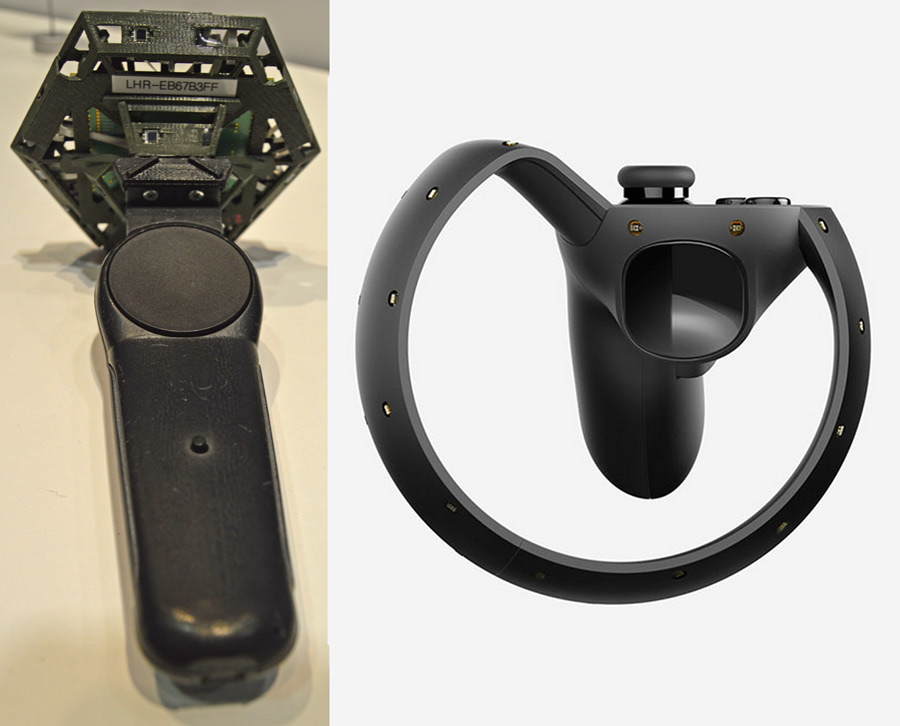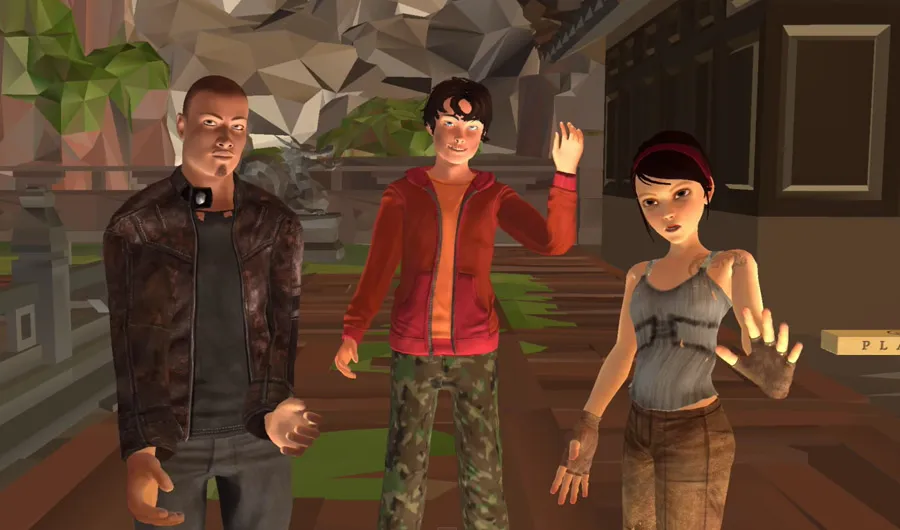High Fidelity, a social VR space started by Second Life Founder Phillip Rosedale, just got an HTC Vive and they are already having a blast – and possibly accomplishing world firsts. High Fidelity’s in office setup, demonstrated in the video above, uses a HTC Vive, an Oculus Rift DK2 with Razer Hydras, and a regular Desktop (also with Hydras) with a depth camera hooked into FaceShift’s facial motion tracking to bridge the hardware gap in a social VR space. This may be the first time that an Oculus Rift and HTC Vive have co-existed in a social VR space.
I actually recently had a chance to experience this for myself at their offices recently, and while the version I saw was only after a few hours of work (literally just avatars in a blue space with a chair in the middle randomly) it was enough to get a sense of what the future of social VR will be like with hand tracked controllers and room scale. Being able to walk in the virtual space around the people with whom I was speaking was something that really helped enhance the feeling of social Presence. The nearly empty environment felt like a blank canvas for the many potential uses of Room Scale in social VR situations, especially in the realm of collaboration.
The hand controllers really stood out for me in this situation and given the fact that this demo melded together Oculus and HTC for the first time it only seems fitting to draw a comparison between the Oculus Touch controllers and the HTC Vive’s. Especially because the differences for me were really highlighted in a social environment. It is worth mentioning again, however, that this was a demo in its very early stages, and the full functionality of the Vive controller had yet to be examined. Additionally the design of the Vive’s controller has yet to be finalized – so we may see something different whrn it ships. That being said, based on what I’ve had on hand, for social the Oculus Touch controller really seems to be the better option (which isn’t surprising given their parent company).

I recently had the opportunity to go hands on with the Touch controls at E3 with Oculus’ internal Toybox demo. The demo, which was easily among the best I’ve done in VR, essentially had me playing with a friend in room full of toys. But beyond the toys, it was the social interaction within that space that really made it so great for me. The Touch controls have two key features that really make them better suited for social VR. The first is fairly obvious, the ability to detect basic finger positions is fairly crucial. The version of the the controller I tried essentially had binary finger functionality on the index finger and thumb allowing for a limited number of hand expressions, but Palmer Luckey tells us the controller is actually “capable of a bit more.”
Beyond the finger tracking though what really stood out for me was how the ergonomics compared in the social setting. The Vive currently uses a set of wand controllers with a track pad on the front, trigger on the back and a hand trigger on the side which in a social setting feels very awkward. The Vive controller feels like you are holding something rather than just having the controller disappear into your hand the way the Touch controllers do. The Touch controls have a very natrual resting hand postion when held, and their light weight allows the controller to disappear after a short while in your mind. There are obvious settings where the Vive controller feels like a more natural fit, Tiltbrush for example really feels natural with those controls, but for social settings where natural hand presence exists Oculus wins out.
But enough comparisons, as I’ve said before it may be a long time before we get “perfect input” for VR – because the only way you can really get that is directly jacking into the brain, but for now both the Vive (whose controller design is still not final) and the Rift have strong entries on the input ecosystem. This social experience was about coexistence and cross platform support, both of which High Fidelity showcased in their video. On our way out the door we even spotted a Morpheus in the corner and although Rosedale claims the company has yet to begin on development for the platform it looks like there will be few barriers to entry into the social VR scene of the future.




























